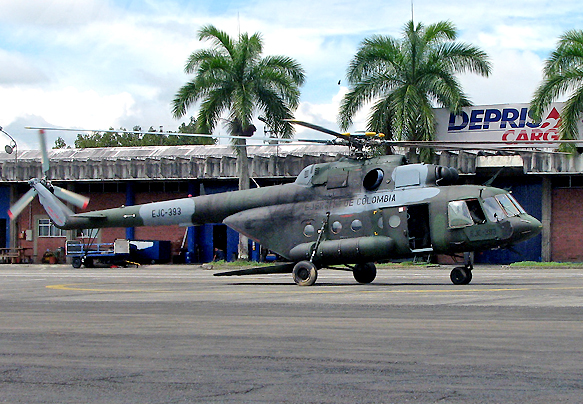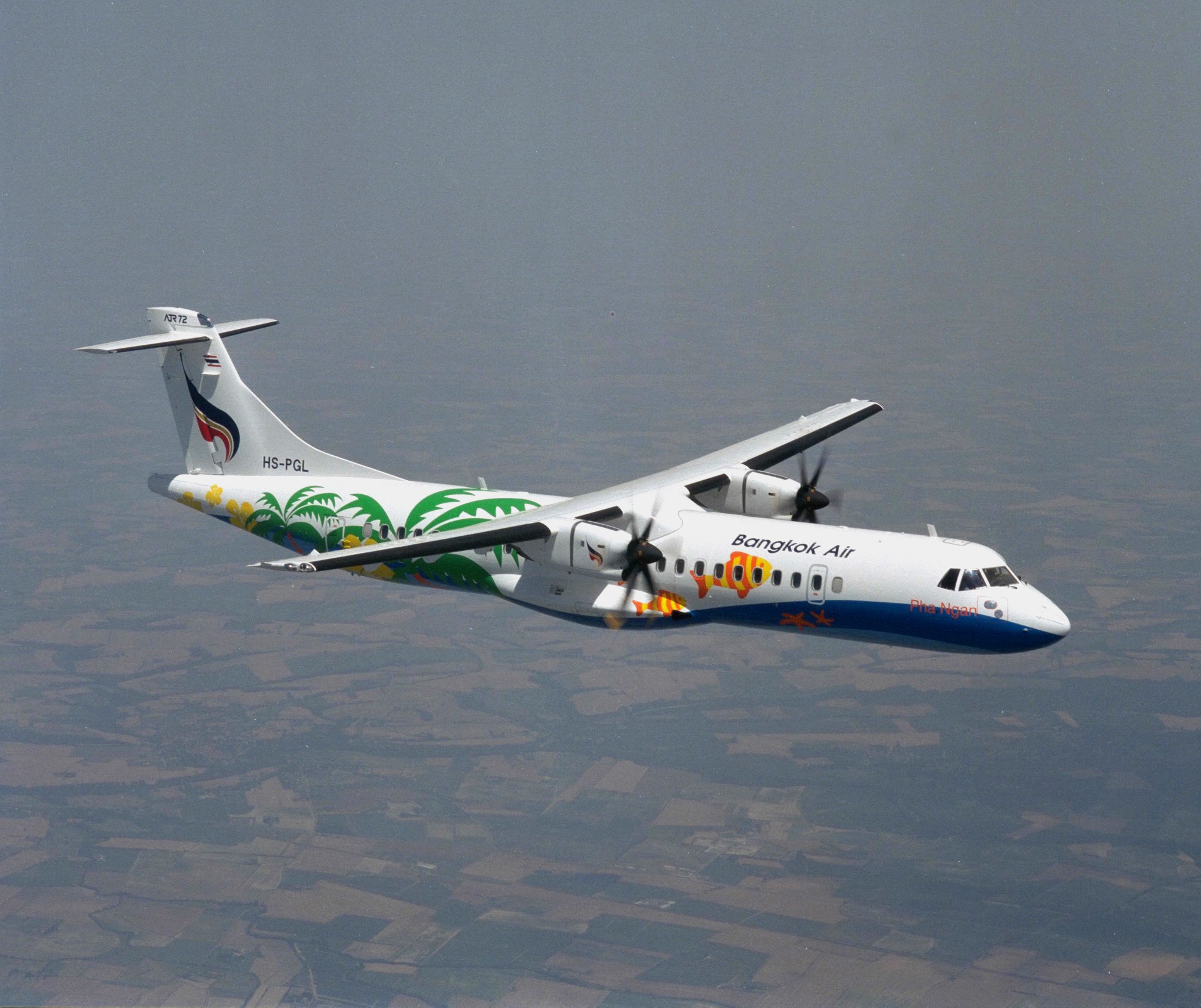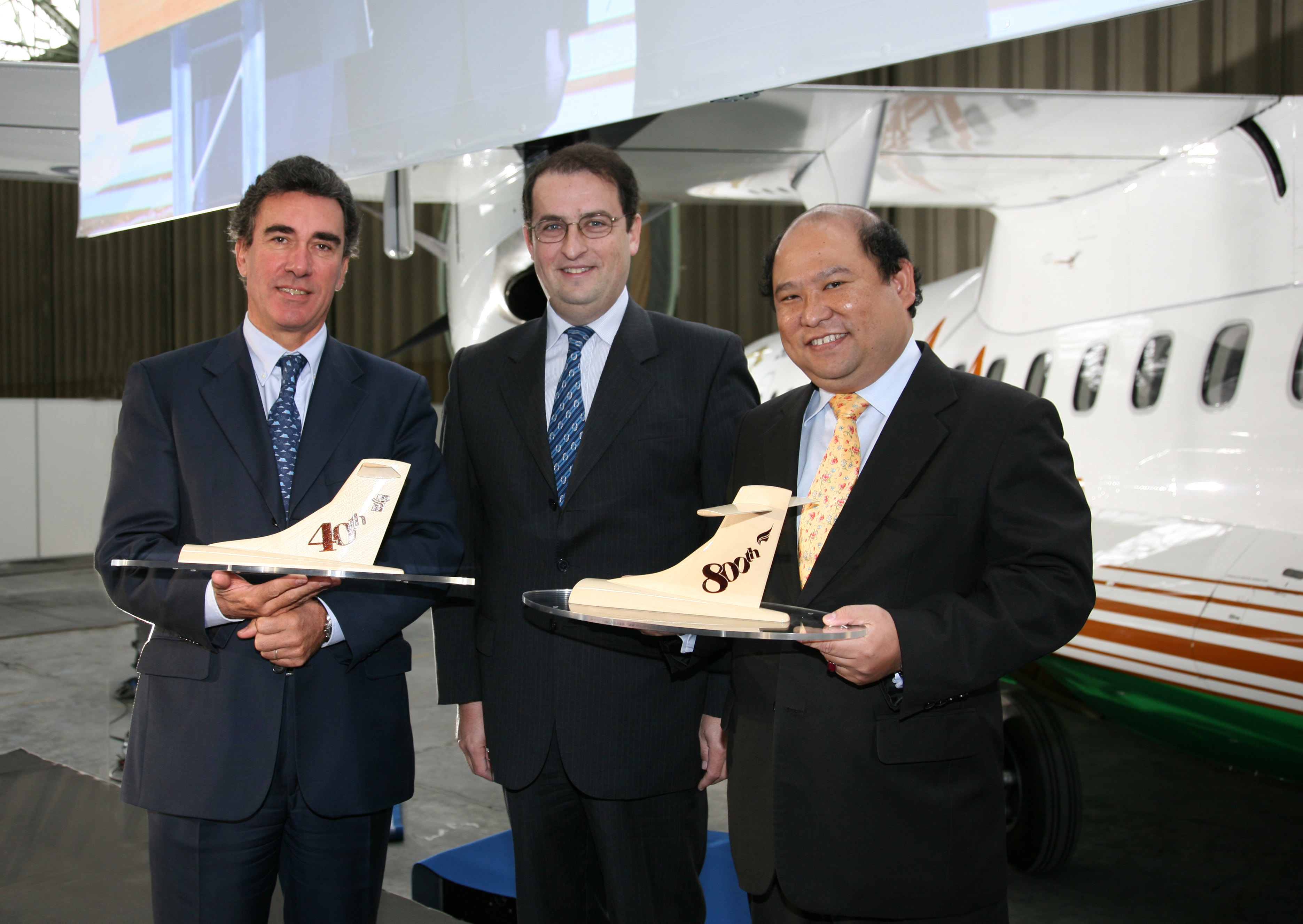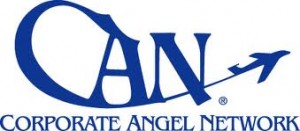Argentina compraría helicópteros Rusos
November 21, 2008
Por: Juan Manuel Barragán
El Estado Mayor Conjunto de las Fuerzas Armadas Argentinas, se encuentra analizando la compra de dos helicópteros Kamov Ka-32C para ser utilizados en apoyo a las futuras Campañas Antárticas de Verano, embarcados en buques del Comando Naval Antártico. También se esta evaluando la compra de tres helicópteros medianos KAZAN/Mil Mi-17 para ser operados por la Fuerza Aérea Argentina.
El Ka-32C tiene capacidad de carga interna de 3,700 Kg ó 5,000 Kg de carga externa, mientras que el Mil Mi-17 posee 4,000Kg y 4,500 Kg de carga respectivamente. Este ultimo helicóptero tiene la particularidad de contar con la autonomía necesaria para que en vuelo ferry, con la máxima carga interna de combustible en la cabina pueda realizar el cruce del Drake, pudiendo llegar en vuelo hasta la Base Marambio (Antártida Argentina).
De este modo se recuperaría la capacidad de unir en vuelo el continente blanco con aeronaves de alas rotativas, desde la baja de los Boeing-Vertol 308 Chinook de la Fuerza Aérea Argentina. El primer vuelo entre el Continente Americano y el Antártico se realizo el 30 de noviembre de 1980, cuando los Chinook matriculas H-91 y H-92, unieron Río Grande (provincia de Tierra del Fuego) con la Base Marambio. En este vuelo se recorrieron 1.325 Km en 6 horas, habiendo recibido apoyo meteorológico en ruta facilitado por el avión KC-130H Hércules, matrícula TC-70 de la I Brigada Aérea “El Palomar”.
Debido a su bajo precio comparado con helicópteros similares occidentales y a su éxito de exportación de 1200 helicópteros a 30 países, es que se evalúa la compra del Mil Mi-17 para la Fuerza Aérea Argentina. En caso de que se concrete la misma, esta seria la primera compra de equipamiento militar de origen Ruso.
Mil Mi-17 del Ejército Nacional de Colombia. (Andres Ramirez)
TAT Group Takes Delivery of its 40th ATR aircraft
November 20, 2008
TAT Group’s leasing subsidiary, AIR Ltd., today took delivery of an ATR 72-500 aircraft which marks the 40th ATR aircraft delivered to the TAT Group. The aircraft will be leased to Bangkok Airways. Coincidentally, both TAT Group and Bangkok Airways are each celebrating their 40th anniversary this year. The delivery ceremony was held at the Final Assembly Line of ATR in Toulouse.
From left to right: Rodolphe Marchais, Chairmain and CEO of TAT Group, Stéphane Mayer, ATR CEO, and Captain Puttipong Prasarttong-Osoth, President of Bangkok Airways.
With the delivery of this 70-seat ATR, Bangkok Airways brings its ATR 72-500 fleet to 9 aircraft, with an additional aircraft to be delivered next year. The carrier started operating ATR aircraft in 1994 and has become one of the largest operators of ATRs in South East Asia. With the delivery of this new aircraft, the airline will grow the total capacity of its ATR fleet and will be able to face its increasing flight demand, notably to and within the region.
Commenting on the delivery ceremony, Rodolphe Marchais, Chairman and CEO of TAT Group, stated: “We have consolidated a long and very fruitful partnership with ATR since the early nineties, and we are honored with the delivery of this 40th aircraft. We are very satisfied with the performances of our ATR aircraft, which are being operated worldwide and which have demonstrated to be a very good investment for AIR, our leasing subsidiary.” And he added: “We are also very proud of being a partner of Bangkok Airways since the beginning of their operations with ATR aircraft, and to be associated to such an important and respected airline.”
Commenting on the deal, Captain Puttipong Prasarttong-Osoth, President of Bangkok Airways, stated: “In today’s complicated aviation environment, the ATR aircraft, with their lowest operating costs and lowest fuel burn, represent more than ever the right choice for our regional operations. With the entry into service of this additional ‘-500 series’, we will be able to introduce more frequencies to our network, while maintaining the high standards of comfort of our ATR fleet.” And he concluded: “We are now celebrating the 40th anniversary of our airline, and we are proud to be developing our future with ATR aircraft in our fleet. The environmental benefits of the ATR can help play an important role in the preservation of the environment in Thailand and the South East Asia.”
Stéphane Mayer, ATR CEO, declared: “Delivering the 40th ATR to the TAT Group is a major milestone for us. We are proud of the confidence they have shown in our product and in its suitability as a sound investment that is operated in many different environments worldwide We are also proud to count Bangkok Airways among our list of longstanding and loyal operators, an airline which has proved its confidence in the ATR family of aircraft all along the development of its regional network.” And he added: “The success of the regional operations of Bangkok Airways with their ATRs is also contributing to consolidate our leading position in Asia, where we have booked orders for more than 130 new aircraft in the last four years.”
Today’s delivered aircraft is also the 800th ATR delivered since the beginning of the programme (401 ATR 42s and 399 ATR 72s). Up to date, ATR has sold 968 aircraft (419 ATR 42s and 549 ATR 72s) and posts a current backlog of 168 aircraft.
The ATR –500 series:
With its ATR 42-500 and ATR 72-500, ATR supplies state-of-the-art aircraft with the highest standards of comfort. The advanced six-blade propeller provides remarkably low noise levels. All ATR models are compliant with noise regulations and have a large margin with regard to Chapter IV (ICAO) noise regulations, effective 1st January 2006. The ‘-500 series’ feature the lowest fuel consumption per passenger and CO2 emissions of the regional aviation, thus contributing to make ATR the “Green Player” of the regional aviation.
About Bangkok Airways:
Bangkok Airways, dubbed as “Asia’s Boutique Airline” served Thailand and the region for exactly four decades this year. From a humble start as a charter service under the name of Sahakol Air back in 1968, the award-winning airline now boasts its portfolio with the most charming destinations in the region. Facing the rapid growth of tourism and business investments in Thailand, Bangkok Airways presently flies to over 20 regional routes, covering nearly all beaches and World Heritage destinations in Thailand, Laos, Cambodia, Vietnam, Myanmar, Maldives, Hong Kong, Singapore, China, and Japan.
About TAT Group
TAT Group came into being in 1968 with the creation of Touraine Air Transport, one of the first regional airlines to make an impact in the history of air transport in modern Europe. Founded by Michel Marchais, TAT Group then diversified into express freight services, aircraft maintenance and leasing. The group today employs 3,600 people worldwide, and is the leading European independent MRO provider.
About ATR
Toulouse, Southern France-based regional aircraft manufacturer ATR is the world leader in the 50 to 74-seat turboprop market. ATR is an equal partnership between Alenia Aeronautica (a Finmeccanica company) and EADS.
TSA and American Airlines Initiate Paperless Boarding Pass
November 20, 2008
LOS ANGELES, CA–(Marketwire – November 20, 2008) – The Transportation Security Administration (TSA) and American Airlines announced today the launch of a Paperless Boarding Pass pilot program at Los Angeles International Airport (LAX). It will allow passengers to receive boarding passes electronically on their cell phones or PDAs, which will then be scanned by TSA security officers at the checkpoint and eliminate the need for a paper boarding pass.
Each paperless boarding pass will display a two-dimensional barcode along with passenger and flight information that will identify the traveler. TSA travel document checkers will use mobile scanners to validate the authenticity of the paperless boarding pass sent to American Airlines passengers as well as the traditional boarding passes. The new technology heightens the ability to detect fraudulent boarding passes while improving customer service and reducing paper use.
“The deployment of the paperless technology signifies TSA’s ongoing commitment to develop and execute new technologies within aviation while enhancing security,” said Larry Fetters, federal security director, LAX. “We are thrilled to be able to expand this pilot program and deploy new technology that will help our document checkers validate authentic boarding documents.”
Last week, American Airlines introduced these new mobile boarding passes at Chicago’s O’Hare International Airport and debuted the technology this week at LAX and John Wayne Orange County (SNA) airports as well.
“Mobile boarding via AA.com is the latest way American Airlines is making travel as easy and convenient as possible, especially for our customers on the go,” said Mark DuPont, American’s vice president – Airport Services Planning. “Customers who choose this option can bypass printing a boarding pass at their home, office or even at the airport to board their plane. They can go straight to security and then to the aircraft.”
To use the mobile boarding pass option — either with the traditional desktop version of AA.com or the mobile version — customers must have an active e-mail address where their boarding pass may be sent and an Internet-enabled mobile device where the two-dimensional barcode can be received. Additionally, during the introduction of this new feature, customers may list only one person in their reservation and must be traveling on American or American Eagle nonstop or same-plane direct to a domestic destination from Chicago, Los Angeles or Orange County. Domestic destinations include those within the United States as well as the U.S. Virgin Islands and Puerto Rico.
The mobile boarding pass process is simple: When customers check in for their flight using American’s Web site, AA.com — either the desktop or mobile versions — they have the option to receive their boarding passes on their cell phones or PDAs. If this option is selected, they will get an e-mail with an Internet link to their boarding pass. The mobile boarding pass contains a two-dimensional barcode that can be scanned at TSA security checkpoints and at American Airlines gates. At the airport, customers simply scan their cell phone or PDA screen when going through security (proper identification must be presented) and when boarding, just as they would a traditional paper boarding pass.
Customers wishing to check bags can also use the new option by scanning the boarding pass on their cell phone or PDA screen at American Airlines self-service machines, ticket counters, or curbside check-in facilities.
CAE to hold a career day for candidates
November 20, 2008
– Openings for more than 250 engineers, technicians and skilled workers- Montreal and Mirabel area
MONTREAL, QUEBEC–(Marketwire – Nov. 20, 2008) – CAE will hold a career day on Wednesday, November 26, from 11 a.m. to 8 p.m. at the CAE Montreal Training Centre, 8585 Cote-de-Liesse in Ville Saint-Laurent. CAE is seeking to recruit some 250 men and women in the engineering, technical, specialized trades, administrative, IT and aviation training sectors.
This day-long event will give potential candidates an opportunity to meet teams of specialists and to learn more about CAE and the positions available. They will be able to discover CAE’s technology and training solutions. Applicants will also have a chance to talk face to face with our recruiters – an ideal opportunity to discuss their previous work history.
Applicants must bring their curriculum vitae. They can see the different career opportunities and pre-register online until 5 p.m. on November 25 at www.cae.com/career.day. Pre-registered applicants will have a chance to win a ride in one of our flight simulators.
CAE: an employer of choice
CAE is proud of its standing as one of Montreal’s 15 Top Employers and one of the 100 Top Employers in Canada in 2008 and 2009. CAE was named 2008 Business of the Year by the Montreal weekly Les Affaires.
“We’re offering high-quality employment and professional development opportunities in many different categories,” said Nathalie Bourque, CAE’s Vice President, Public Affairs and Global Communications. “We’re in a fascinating line of work that’s on the leading edge of numerous technological sectors.”
About CAE
CAE is a world leader in providing simulation and modelling technologies and integrated training solutions for the civil aviation industry and defence forces around the globe. With annual revenues exceeding $1.4 billion, CAE employs approximately 7,000 people at more than 75 sites and training locations in 20 countries. We have the world’s largest installed base of civil and military full-flight simulators and training devices. Through our global network of 27 civil aviation and military training centres, we train more than 75,000 crew members a year. We also offer modelling and simulation software to various market segments and, through CAE’s professional services division, we assist customers with a wide range of simulation-based needs.
Business Jets Winging their Way out of the Financial Crisis
November 20, 2008
DUSSELDORF, GERMANY–(Marketwire – November 20, 2008) –
2nd International IIR Conference “Business Aviation” from 20th to 22nd January 2009, Hotel Louis C. Jacob, Hamburg
Frankfurt/Hamburg, November 2008. Despite the financial crisis, business jets have become more and more popular. According to a study by the supplier Honeywell Aerospace, the development of the market for business jets is disproportionate. The industry thus expects further growth in 2009. The production will be working to capacity for the following three years and the demand will still be high (AeroBrief, 2008-10-16).
“It is no special luxury anymore to fly with a business jet today. It has become a normal, fast means of transport,” agreed Dr. Bernd Gans, President of the German Business Aviation Association (GBAA) (Focus, 2008-11-05). Gans chairs the 2nd International IIR Conference “Business Aviation”, which takes place from 20th to 22nd January 2009 in Hamburg. The event will discuss the new regulations of the European Aviation Safety Agency (EASA), the project “Single European Sky” (SES) of the European Commission and changes in corporate financing of planes.
In addition to GBAA President Gans, Eric Mandemaker, CEO of the European Business Aviation Association (EBAA), and Trevor Esling of Cessna Aircraft UK will report on developments on the business air travel market. Ministerialdirigent (assistant secretary) Franzjosef Schafhausen from the Federal Environment Ministry will give a presentation on EU emissions trading and its impact on business air travel and Peter Herr of Beechcraft Aircraft will introduce one of the plane models for business air travel. Business models for purchasing and operating company planes will be presented by NetJets Europe and Execujet Europe.
NASA Spacecraft Detects Buried Glaciers on Mars
November 20, 2008
Scientists analyzed data from the spacecraft’s ground-penetrating radar and report in the
“Altogether, these glaciers almost certainly represent the largest reservoir of water ice on Mars that is not in the polar caps,” said
Scientists have been puzzled by what are known as aprons — gently sloping areas containing rocky deposits at the bases of taller geographical features — since NASA’s Viking orbiters first observed them on the Martian surface in the 1970s. One theory has been that the aprons are flows of rocky debris lubricated by a small amount of ice. Now, the shallow radar instrument on the Mars Reconnaissance Orbiter has provided scientists an answer to this Martian puzzle.
“These results are the smoking gun pointing to the presence of large amounts of water ice at these latitudes,” said Ali Safaeinili, a shallow radar instruments team member with NASA’s Jet Propulsion Laboratory in
Radar echoes received by the spacecraft indicated radio waves pass through the aprons and reflect off a deeper surface below without significant loss in strength. That is expected if the apron areas are composed of thick ice under a relatively thin covering. The radar does not detect reflections from the interior of these deposits as would occur if they contained significant rock debris. The apparent velocity of radio waves passing through the apron is consistent with a composition of water ice.
Scientists developed the shallow radar instrument for the orbiter to examine these mid-latitude geographical features and layered deposits at the Martian poles. The Italian Space Agency provided the instrument.
“We developed the instrument so it could operate on this kind of terrain,” said
Holt and 11 co-authors report the buried glaciers lie in the Hellas Basin region of Mars’ southern hemisphere. The radar also has detected similar-appearing aprons extending from cliffs in the northern hemisphere.
“There’s an even larger volume of water ice in the northern deposits,” said JPL geologist
The rocky debris blanket topping the glaciers apparently has protected the ice from vaporizing, which would happen if it were exposed to the atmosphere at these latitudes.
“A key question is, how did the ice get there in the first place?” said
JPL manages the Mars Reconnaissance Orbiter for NASA’s Science Mission Directorate in
Sikorsky Sales in China Continue to Grow
November 20, 2008
The acceptance follows a trend of civil aircraft sales into the region for Sikorsky. Last month, Sikorsky signed an agreement with the Rescue and Salvage Bureau of China’s Ministry of Transport (MOT) for four S-76C++ helicopters to enhance the MOT’s maritime and search and rescue capabilities, bringing the fleet’s total to eight and making it one of the largest operators of Sikorsky S-76(R) SAR helicopters in the world.
“Sikorsky Aircraft has been busy in
Two of the three licensed offshore oil helicopter operators in
Sikorsky has further invested in the region through a collaboration with Aviation Industry of
Sikorsky Aircraft Corp., based in
Pratt & Whitney Rocketdyne Successfully Completes Critical Design Review on J-2X Rocket Engine
November 19, 2008
Starting in 2014, the J-2X rocket engine will power the Ares I rocket into space, helping deliver the Orion crew exploration vehicle, its crew of astronauts and small payloads to the International Space Station. The J-2X will also power launch vehicles to the moon and beyond in coming decades. The heart of the J-2X is proven heritage technology that propelled the Apollo-era Saturn V rockets into space.
“The successful completion of the Critical Design Review is a major milestone in the development of the J-2X — one of the safest, most affordable and highest performing rocket engines ever to be built,” said
The CDR was conducted in
The first engine hot-fire test is scheduled for late summer 2010 at NASA’s Stennis Space Center in
Pratt & Whitney Rocketdyne, Inc., a part of Pratt & Whitney, is a preferred provider of high-value propulsion, power, energy and innovative system solutions used in a wide variety of government and commercial applications, including the main engines for the space shuttle, Atlas and Delta launch vehicles, missile defense systems and advanced hypersonic engines.
Pratt & Whitney is a world leader in the design, manufacture and service of aircraft engines, space propulsion systems and industrial gas turbines. United Technologies, based in
Honeywell ITEC to Deliver F124 Engine for Alenia Aermacchi Advanced Jet Trainer
November 19, 2008
High Performance, Fuel Efficient Aircraft Engine Reduces Operational Costs, Provides Superior Power and Reliability
Agreement Valued at $52 Million
“The design and durability of the ITEC F124 engine delivers an additional performance margin over other aircraft engines, allowing it to maintain aircraft specification thrust levels for a longer period of time,” said
“The F124-GA-200 Honeywell ITEC engine includes several features designed to ease maintenance, such as an integrated engine monitoring system that monitors engine health and tracks life usage and on-condition maintenance,” Marinick added. “The engine has also been designed to significantly reduce maintenance and downtime, improving fleet and mission readiness.”
The F124-GA-200 engine design includes new mount adapters, a new accessory gearbox with provisions for mounting aircraft accessories and a new exhaust system. It also includes a new, full authority digital engine control (FADEC) based on Honeywell’s latest modular aerospace control architecture, offering superior reliability and performance. The F124-GA-200 engine is a derivative of an existing turbofan engine, the F124-GA-100, used on the
The F124-GA-200 engine provides primary propulsion power for the M346 aircraft. A high performance powerplant with the highest thrust to weight in its class, the F124-GA-200 is a low bypass ratio engine, meeting the most rigorous requirements of modern light combat and advanced trainer aircraft. It is the latest variant in the F-124 family that also includes the F124-GA-100 for the Aero Vodochody/CzAF L-159 and the Boeing/DARPA X-45A UCAV.
The M-346 aircraft is a twin-engine, transonic, advanced trainer capable of flight qualities and performance matching those of the latest generation of front-line fighters. The combination of the M-346’s superior performance, high reliability, and low life-cycle-cost make the F124 an ideal powerplant to meet the fleet’s training requirements worldwide.
For more information about Alenia Aermacchi and the M-346 new generation advanced lead-in fighter trainer, visit http://www.aermacchi.it.
NASA Successfully Tests First Deep Space Internet
November 19, 2008
| NASA Logo. (PRNewsFoto/NASA) WASHINGTON, DC UNITED STATES |
�
Working as part of a NASA-wide team, engineers from NASA’s Jet Propulsion Laboratory in
“This is the first step in creating a totally new space communications capability, an interplanetary Internet,” said
NASA and
The Interplanetary Internet must be robust to withstand delays, disruptions and disconnections in space. Glitches can happen when a spacecraft moves behind a planet, or when solar storms and long communication delays occur. The delay in sending or receiving data from Mars takes between three-and-a-half to 20 minutes at the speed of light.
Unlike TCP/IP on Earth, the DTN does not assume a continuous end-to-end connection. In its design, if a destination path cannot be found, the data packets are not discarded. Instead, each network node keeps the information as long as necessary until it can communicate safely with another node. This store-and-forward method, similar to basketball players safely passing the ball to the player nearest the basket means information does not get lost when no immediate path to the destination exists. Eventually, the information is delivered to the end user.
“In space today, an operations team must manually schedule each link and generate all the commands to specify which data to send, when to send it, and where to send it,” said
Engineers began a month-long series of DTN demonstrations in October. Data were transmitted using NASA’s Deep Space Network in demonstrations occurring twice a week. Engineers use NASA’s Epoxi spacecraft as a Mars data-relay orbiter. Epoxi is on a mission to encounter Comet Hartley 2 in two years. There are 10 nodes on this early interplanetary network. One is the Epoxi spacecraft itself and the other nine, which are on the ground at JPL, simulate Mars landers, orbiters and ground mission-operations centers.
This month-long experiment is the first in a series of planned demonstrations to qualify the technology for use on a variety of upcoming space missions. In the next round of testing, a NASA-wide demonstration using new DTN software loaded on board the International Space Station is scheduled to begin next summer.
In the next few years, the Interplanetary Internet could enable many new types of space missions. Complex missions involving multiple landed, mobile and orbiting spacecraft will be far easier to support through the use of the Interplanetary Internet. It also could ensure reliable communications for astronauts on the surface of the moon.
The Deep Impact Networking Experiment is sponsored by the Space Communications and Navigation Office in NASA’s Space Operations Mission Directorate in












